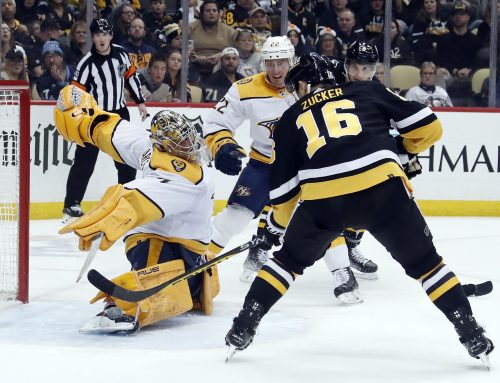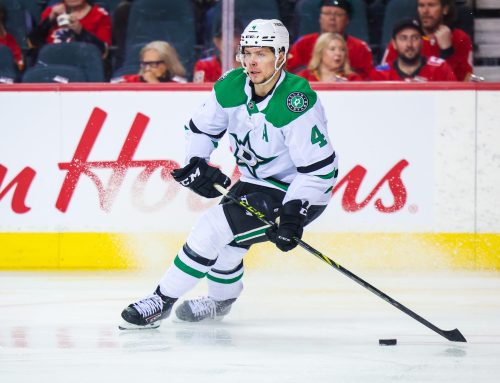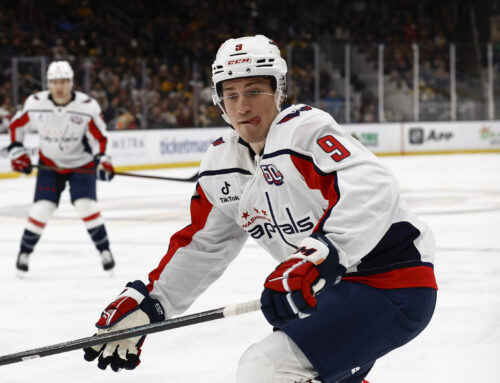
Who are the best bargains under $2 million?
It goes without saying that effective low-cost players are essential to building championship teams in salary cap leagues. This holds true in the NHL as well as in fantasy hockey. In order to win, you must get the most out of your allocated dollars. As an added bonus, the money you save can be used to upgrade your roster elsewhere or to keep a star-heavy roster together for additional championship runs.
In points-only leagues, identifying bargain talent is relatively easy. There are two reasons for this: having just points makes evaluating players a simpler task (one category) and point production is in many cases the strongest factor in determining player salary. For the most part, those that produce the most points are paid the most. For examples of current point-producing bargains, click here for higher-end forwards or here for best bang for your buck.
In multi-category leagues this task is much more complex. It is very difficult to figure out how to value one player versus another when it is not as simple as comparing their point production. Plus, each league setup is different which means that players have a different level of importance in each environment.
What makes multi-category leagues interesting is that some unexpected players can hold a ton of value in a particular format. Fantasy hockey is different from real-life hockey which creates some interesting dynamics as GMs try to build winning rosters. Those who can be unbiased and simply seek out players who are going to help them in their league put themselves in a very advantageous position.
Today we will look at some examples of cheap players that excel in a multi-category format.
We will use the United Hockey League, a deep league with many DobberHockey regulars, as our example. The reason for this is because, as a league where over 550 players are owned on the pro rosters alone along with most of the available categories, the cap bargains mentioned will appeal to just about everyone in some way. Additionally, the league is hosted in Fantrax which has its own league-specific player valuation formula. This makes the exporting of the data, along with corresponding player cap hits, much easier.
United Hockey League (dynasty)
Scoring setup: Head-to-Head
Teams: 24
Pro Rosters: 23 + 4 IR
Farm Rosters: 27 + one-year protection for newly-drafted prospects
Categories: G, A, +/-, PIM, SOG, GWG, PPP, SHP, Hit, Blk, FOW, W, GAA, SV, SV%, SO
Here is the breakdown of this league with player salaries versus the computed score for each player based on the 2013-14 NHL season. Only players with a score of 600 or better are considered (191 in total) to make sure we are sticking with the top of the pyramid when making observations.

It is remarkable how many players among the league’s best have a small cap hit. Among the sample of players used, there are 40 players paid $2 million or less, meaning that more than 20% of this group of the most relevant players are bargains. Considering their value in all-around production, it cannot be overstated how important it is to own several of them on your team.
Who are the cap bargains?
In order to make things easier, the players will be broken into three categories: the breakout offensive forwards, the quality depth forwards and the defensemen. This will help establish where these players come from and what their respective future might look like.
|
Breakout offensive talent |
Quality depth |
Defensemen |
|
Atkinson, Cam – CBJ |
Backlund, Mikael – CGY |
Dillon, Brenden – DAL |
|
Bonino, Nick – ANA |
Boyle, Brian – NYR |
Faulk, Justin – CAR |
|
Gallagher, Brendan – MON |
Couturier, Sean – PHI |
Franson, Cody – TOR |
|
Johansen, Ryan – CBJ |
Eakin, Cody – DAL |
Gudas, Radko – TB |
|
Johnson, Tyler – TB |
Eller, Lars – MON |
Krug, Torey – BOS |
|
Killorn, Alex – TB |
Foligno, Marcus – BUF |
Lovejoy, Ben – ANA |
|
Kreider, Chris – NYR |
Garbutt, Ryan – DAL
📢 advertisement:
|
MacDonald, Andrew – NYI |
|
Palat, Ondrej – TB |
Goc, Marcel – FLA |
Muzzin, Jake – LA |
|
Penner, Dustin – ANA |
King, Dwight – LA |
|
|
Perreault, Mathieu – ANA |
Letestu, Mark – CBJ |
|
|
Saad, Brandon – CHI |
Richardson, Brad – VAN |
|
|
Santorelli, Mike – VAN |
Roussel, Antoine – DAL |
|
|
Scheifele, Mark – WPG |
Shaw, Andrew – CHI |
|
|
Schwartz, Jaden – STL |
Smith, Zack – OTT |
|
|
Smith, Reilly – BOS |
||
|
Sobotka, Vladimir – STL |
||
|
Wingels, Tommy – SJ |
||
|
Zuccarello, Mats – NYR |
Breakout offensive forwards
This category includes forwards with a points-per-game ratio of 0.5 or better this season. This ranges from top prospects on entry-level contracts to longer-developing prospects hitting their stride to the renaissance of Dustin Penner’s career.
As better point producers, these forwards also have an appeal in points-only leagues, not just multi-category. The danger comes when their contract runs out given that point totals heavily impact new salaries. Considering that the cap ceiling is going to increase substantially in the coming years due to various new revenue streams for the NHL, there are instances where the raises will be irrational and thus will severely hurt the player’s cap-league appeal.
Quality depth forwards
This includes all forwards beneath the 0.5-points-per-game mark. For the most part, they are depth players. Since they produce fewer points, the fact that they are still among the most productive multi-category players means that they bring more to the table in peripheral categories.
Unlike the more offensive-minded forwards, the depth guys are less likely to receive huge raises. They are usually lower on the depth chart which generally means less money despite great multi-category contributions. The fact that the risk of having one of their contract renewals ruin your team’s finances is minimal helps them maintain their value over the years.
For example, Ryan Garbutt just signed a three-year extension that will cost $1.8 million against the cap. While it is a big raise from his current $575,000, it is still a below-average salary which should not hurt his fantasy value provided that he continues to produce similar numbers.
Defensemen
Blueliners are more complicated when it comes to their ability to maintain a reasonable salary. There are plenty of examples of both offensive-minded and defensive-minded defensemen scoring abnormally-large contracts. Thus, it is possible for defensemen to earn an inflated cap hit for their effectiveness at one end of the ice or the other (or both).
Additionally, their position on the depth chart plays a role in determining salaries. The good news is that even third-pairing defensemen can be very valuable in fantasy hockey. Most of them play enough minutes for their all-around stats to be produced on a fairly-regular basis.
Closing thoughts
As we have seen, there are some unlikely names that appear among the most effective multi-category players this year. Knowing who these players are is extremely important especially when competing with other top GMs to get an edge in your quest for a championship. Many GMs have a bias towards the real-life effectiveness of players and will ignore actual fantasy-league value. This will create opportunities for you to steal a few players on the trade market and on the waiver wire.
Next week we will look at tips on how to identify the next crop of players that will provide excellent value to your fantasy team at a discount rate.
Previously in Capped:





 SEA
SEA NYI
NYI BUF
BUF DAL
DAL
 CBJ
CBJ NYR
NYR ANA
ANA STL
STL L.A
L.A MTL
MTL
